Brick trick: Haddo Yard housing mixes efficiency and character
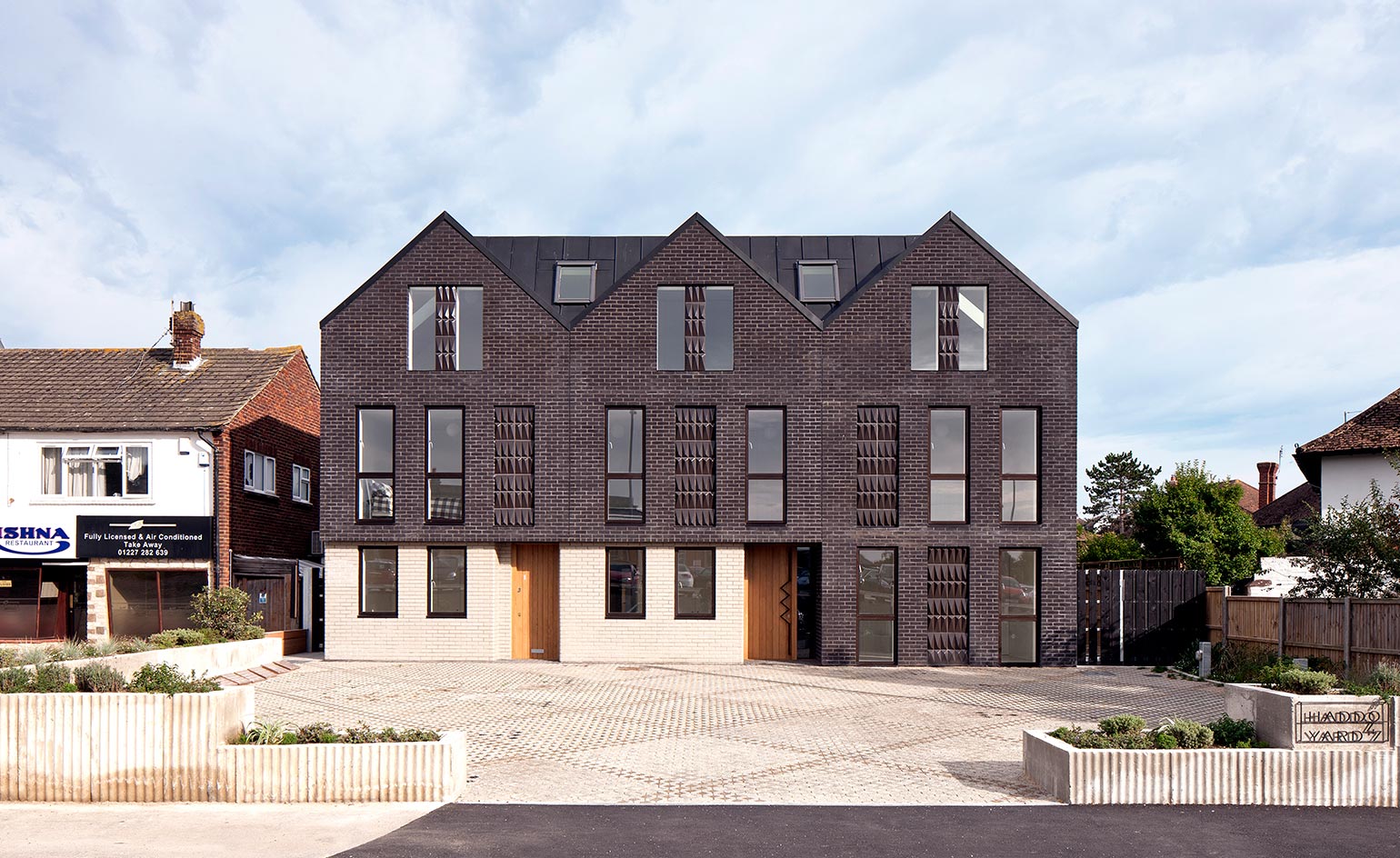
Haddo Yard, a new build block of seven contemporary apartments in Whitstable, Kent, is a housing scheme that eschews and challenges accepted conventions of what volume housing should do – and what it should look like.
The project was driven by developer Arrant Land, whose commitment to ‘adventurous but contextual contemporary design’ was met and matched by the equally conceptually/contextually daring Denizen Works, in what is the London-based practice’s first housing scheme. Yet for all its formal audaciousness and distinctive character Haddo Yard is no flight of architectural fancy. This is a development that is very much influenced by and rooted in the surrounding streetscape and wider Kent landscape.
Occupying a prominent position on the street, and built on the site of a former bungalow, the project takes its name from Oliver Haddo, a character in former resident William Somerset Maugham’s novel, The Magician, believed to be based on occultist Aleister Crowley. Denizen Works founder Murray Kerr admits that 'perhaps maybe just subconsciously [we were influenced] by the research into Crowley and his symbolism, the triangular forms of the gables along with his All Seeing Eye being evident in the final faience tile designs.'
Essentially, though the aesthetic character of the building takes its main cues from the local context, with the dark brick gables evoking the distinctive forms and tones of the black timber fishing huts that populate the sea front. Whereas the light brick base ties the building into the scale of the adjacent shops.
‘For the “blind” panels which maintain the rhythm of the elevations and conceal the party walls, we employed the Victorian approach which uses expensive materials on the public facing elevation with cheaper materials used on the rear, private elevation,’ explains Kerr. ‘In this instance, we designed bespoke faience tiles – a common decorative element found on many Whitstable houses – for the front elevation and repurposed offcuts from the brick clad lintels to clad the blind panels to the rear elevation. This also reinforced the project’s aim of trying to minimise waste.’
Haddo Yard, with all its flats enjoying dual aspect views, is also a project that was achieved within the modest budget parameters of a commercial housing development. Consequently, it can be viewed as something of an exemplar model not only in terms of its elegantly site sympathetic design, but equally crucially, in its affordability.
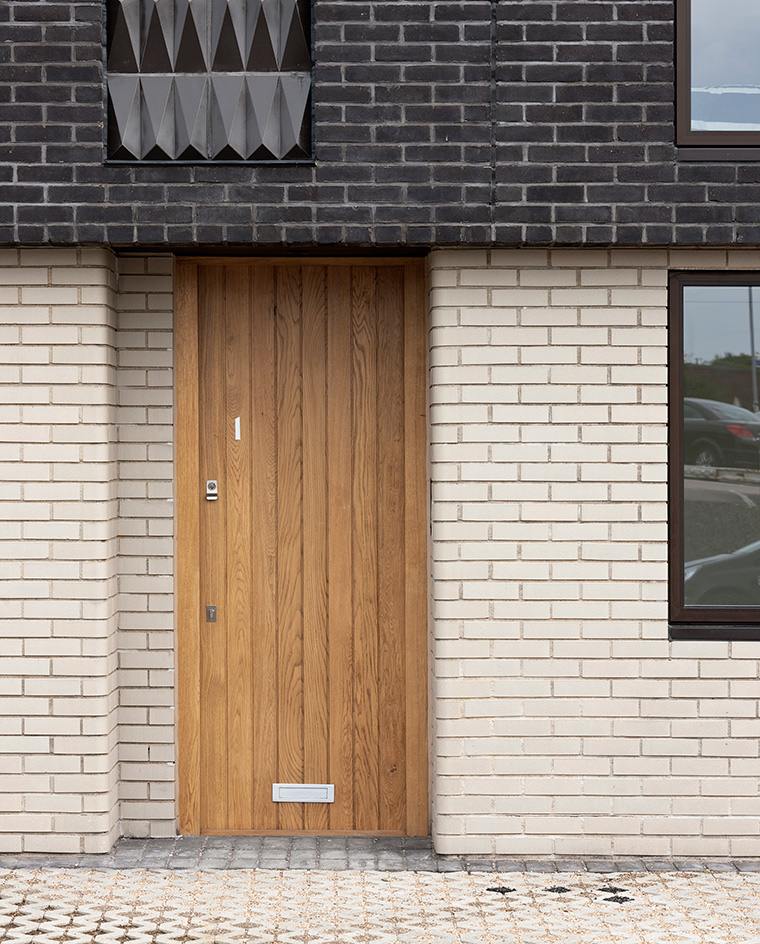
Created for Arrant Land, the project includes seven flats
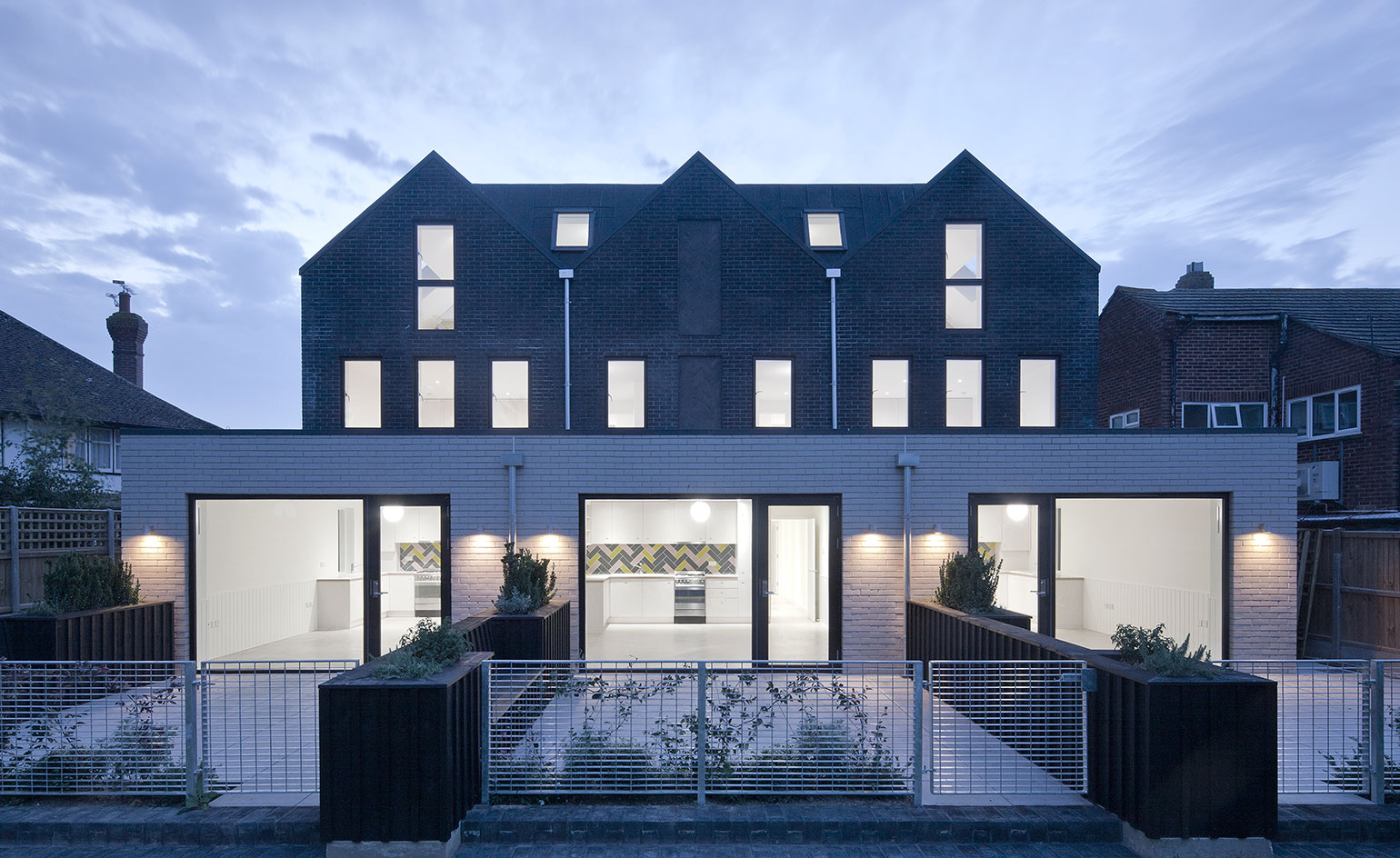
The developer was after a design that would be ’adventurous but contextual’.
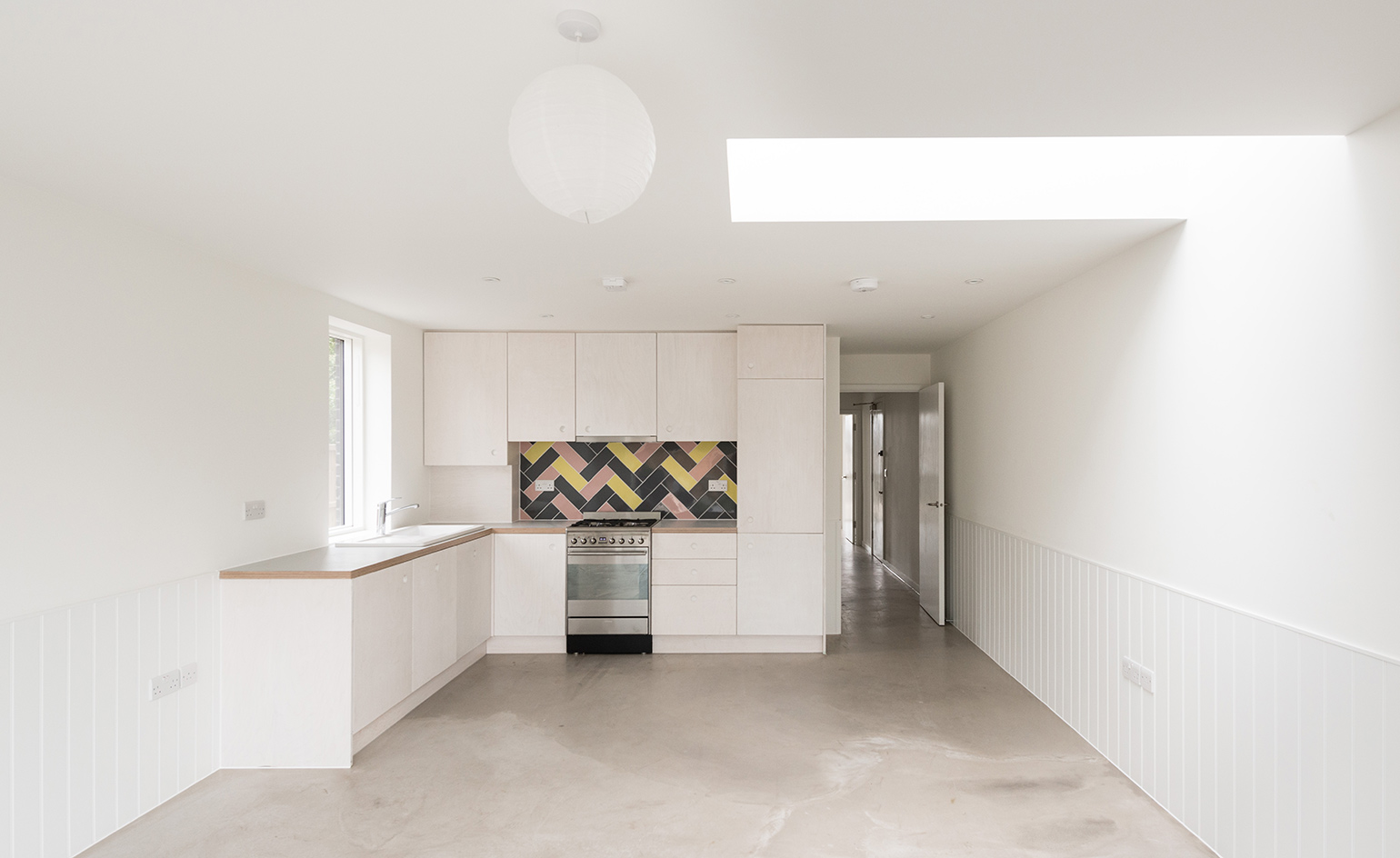
A darker exterior, designed to reference the surrounding architecture, is contrasted by light interiors.
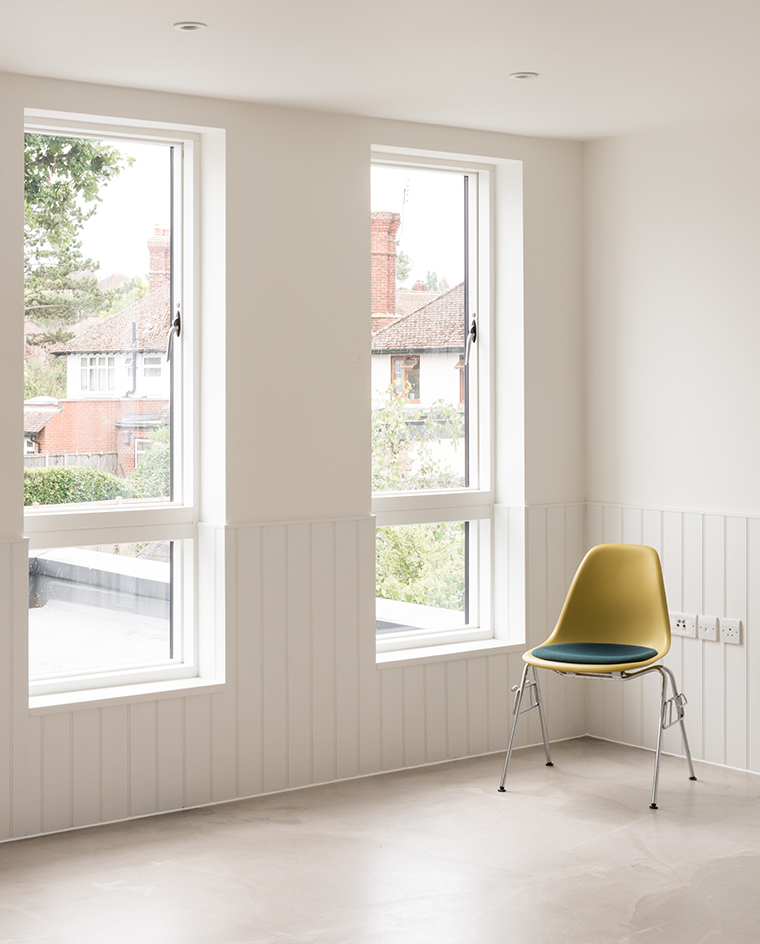
The cleverly designed interiors have large windows and dual aspect views.
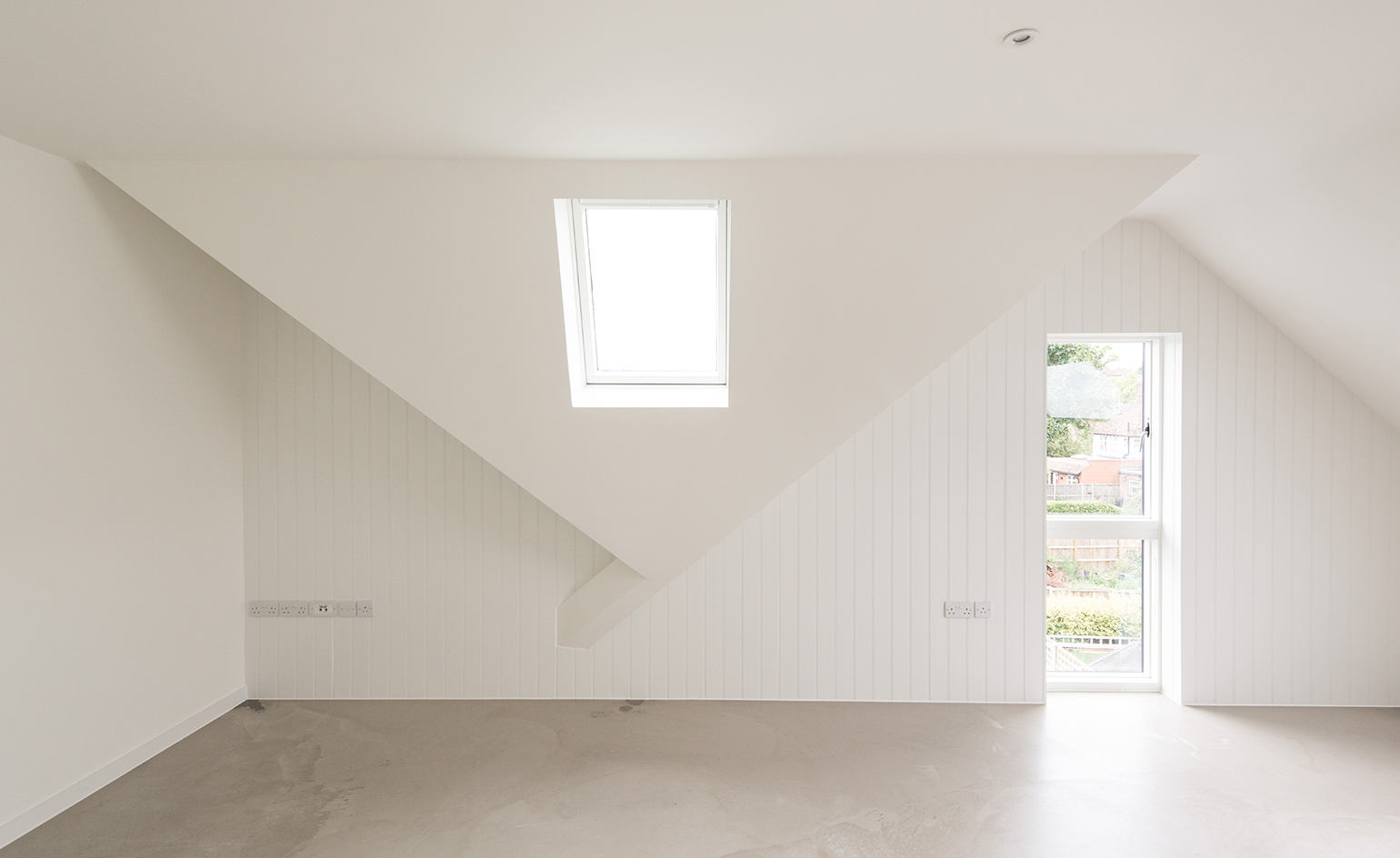
The gable roof geometry is also referenced inside
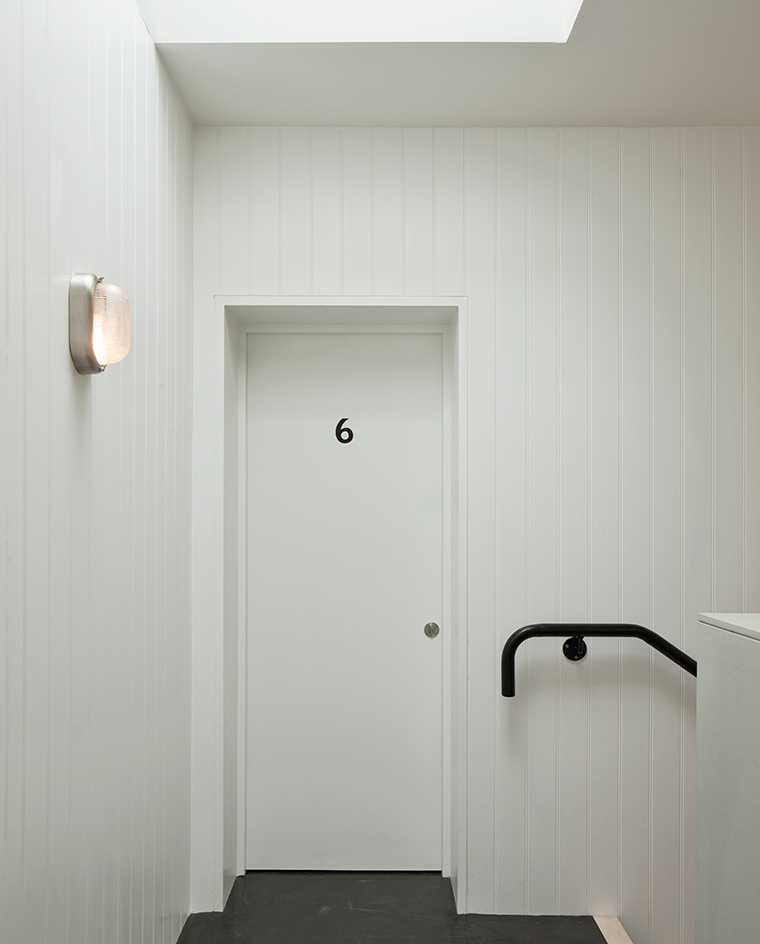
Haddo Yard is the emerging architecture practice’s first larger scale housing scheme
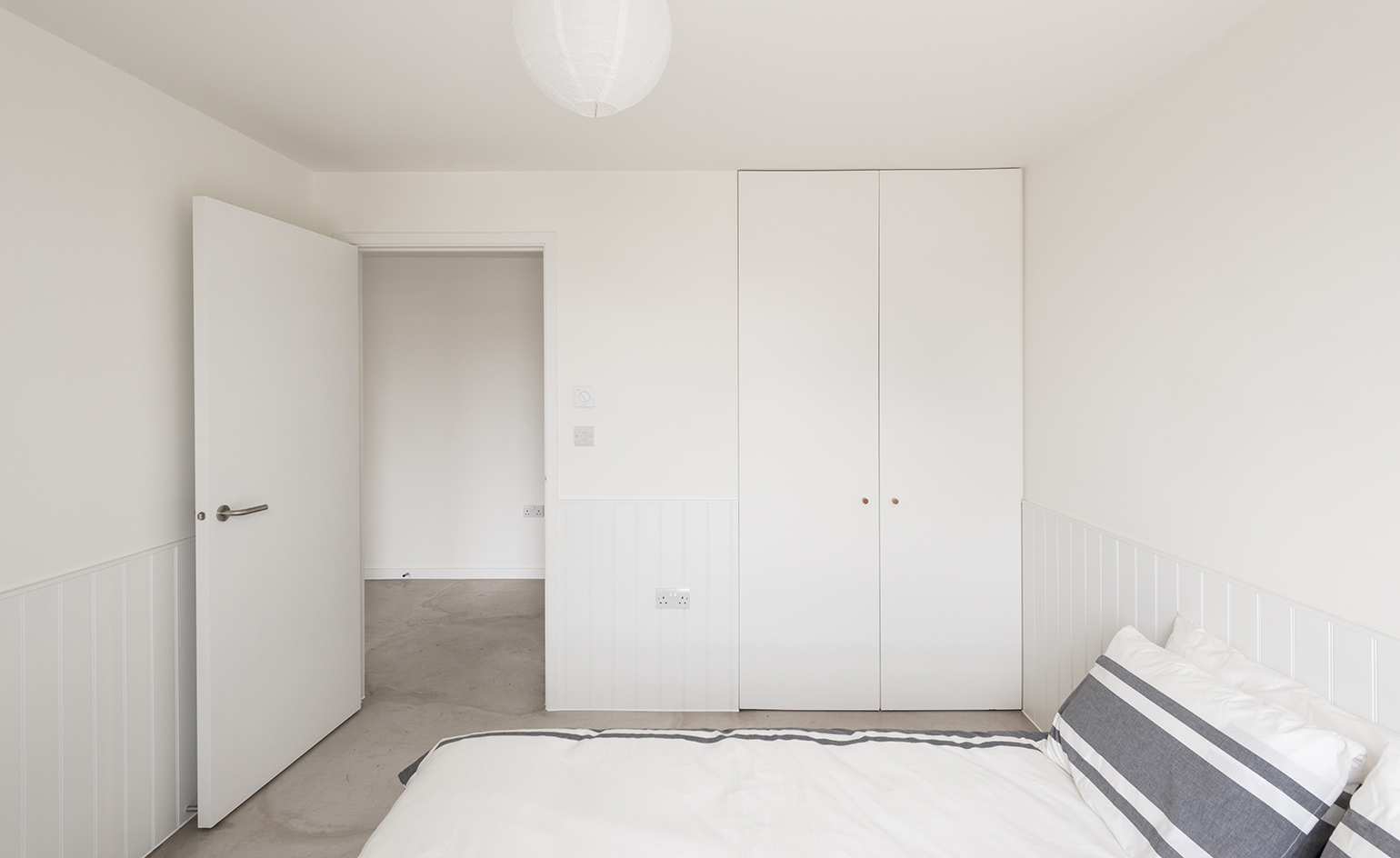
While using literary references, the design is both efficient and pragmatic.
INFORMATION
For more information, visit the Denizen Works website
Receive our daily digest of inspiration, escapism and design stories from around the world direct to your inbox.
-
 Brunello Cucinelli’s festive takeover of Harrods turns the department store into a cashmere wonderland
Brunello Cucinelli’s festive takeover of Harrods turns the department store into a cashmere wonderlandUnveiled this morning, the Umbrian fashion house has taken over the store’s iconic Brompton Road windows, celebrating the spirit of its home town of Solomeo in fantastical fashion
-
 Each mundane object tells a story at Pace’s tribute to the everyday
Each mundane object tells a story at Pace’s tribute to the everydayIn a group exhibition, ‘Monument to the Unimportant’, artists give the seemingly insignificant – from discarded clothes to weeds in cracks – a longer look
-
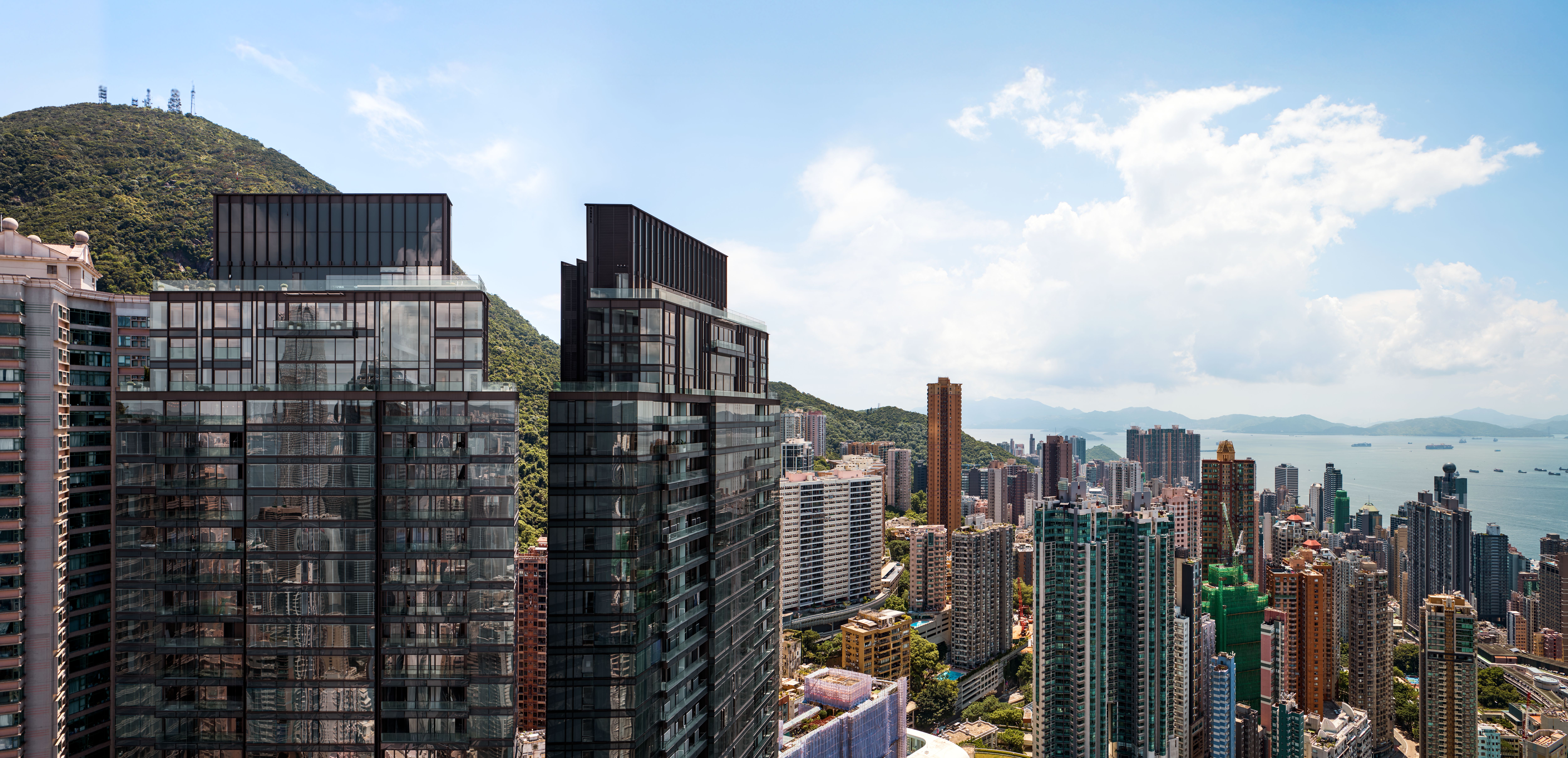 Discover The Legacy, Hong Kong’s eye-catching new condo
Discover The Legacy, Hong Kong’s eye-catching new condoThe Legacy, by ACPV Architects Antonio Citterio Patricia Viel, is a striking new condo tower that aims to ‘create a sense of community and solidarity among people’
-
 A refreshed 1950s apartment in East London allows for moments of discovery
A refreshed 1950s apartment in East London allows for moments of discoveryWith this 1950s apartment redesign, London-based architects Studio Naama wanted to create a residence which reflects the fun and individual nature of the clients
-
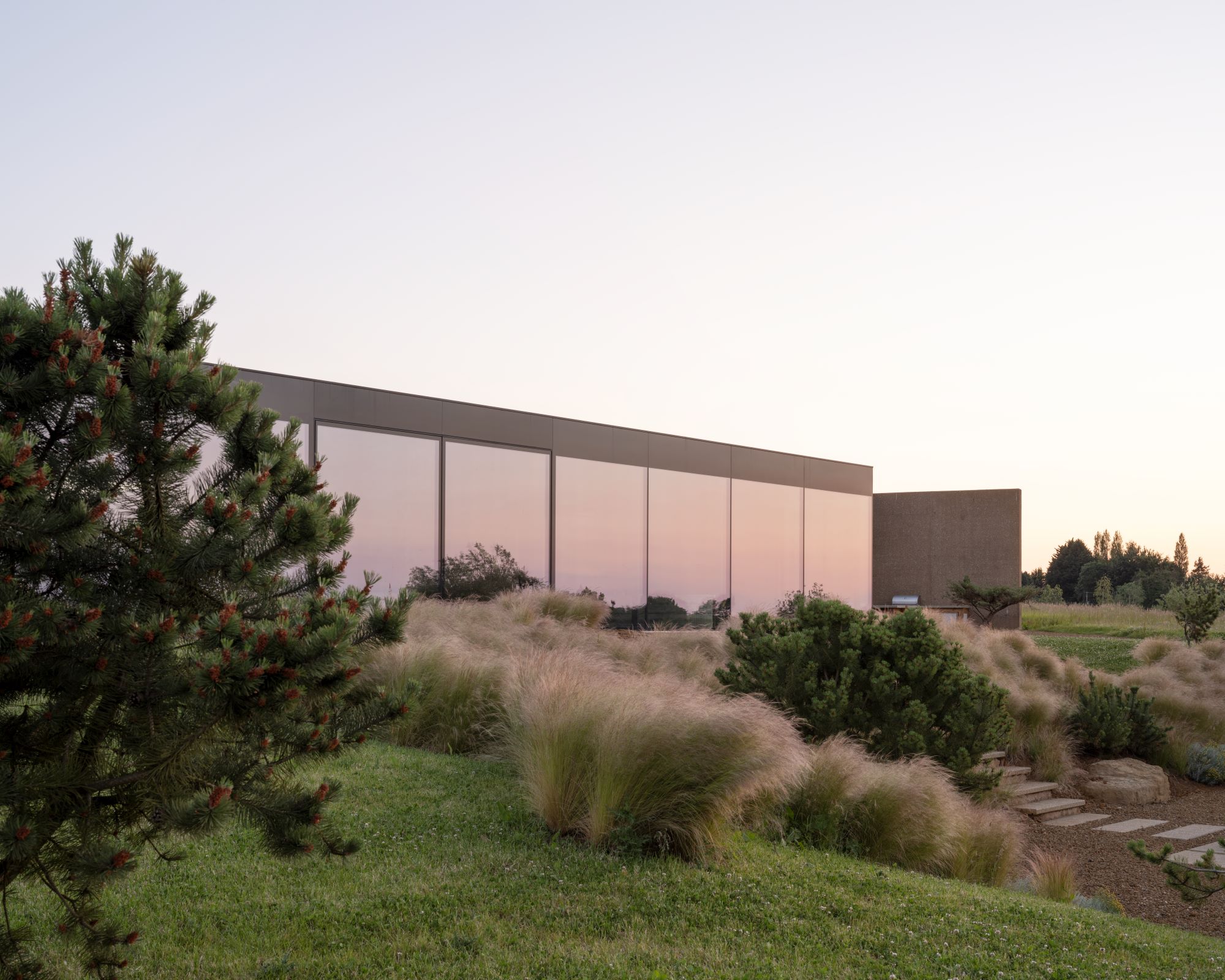 In this Cotswolds home, drama meets minimalism
In this Cotswolds home, drama meets minimalismCotswolds home Hiaven house, with interiors designed by McLaren Excell, is a perfect blend of contemporary chic and calm, countryside drama
-
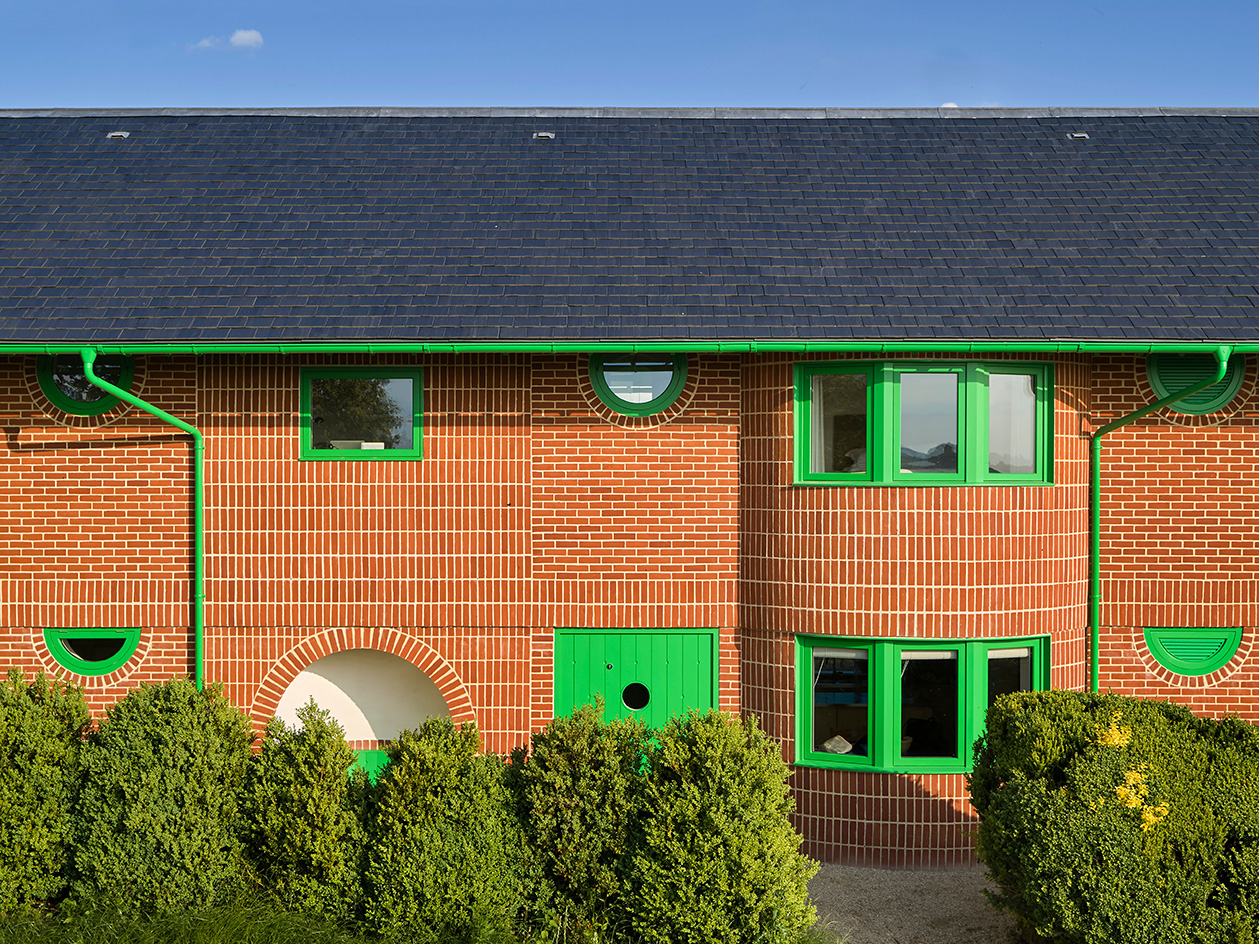 David Kohn’s first book, ‘Stages’, is unpredictable, experimental and informative
David Kohn’s first book, ‘Stages’, is unpredictable, experimental and informativeThe first book on David Kohn Architects focuses on the work of the award-winning London-based practice; ‘Stages’ is an innovative monograph in 12 parts
-
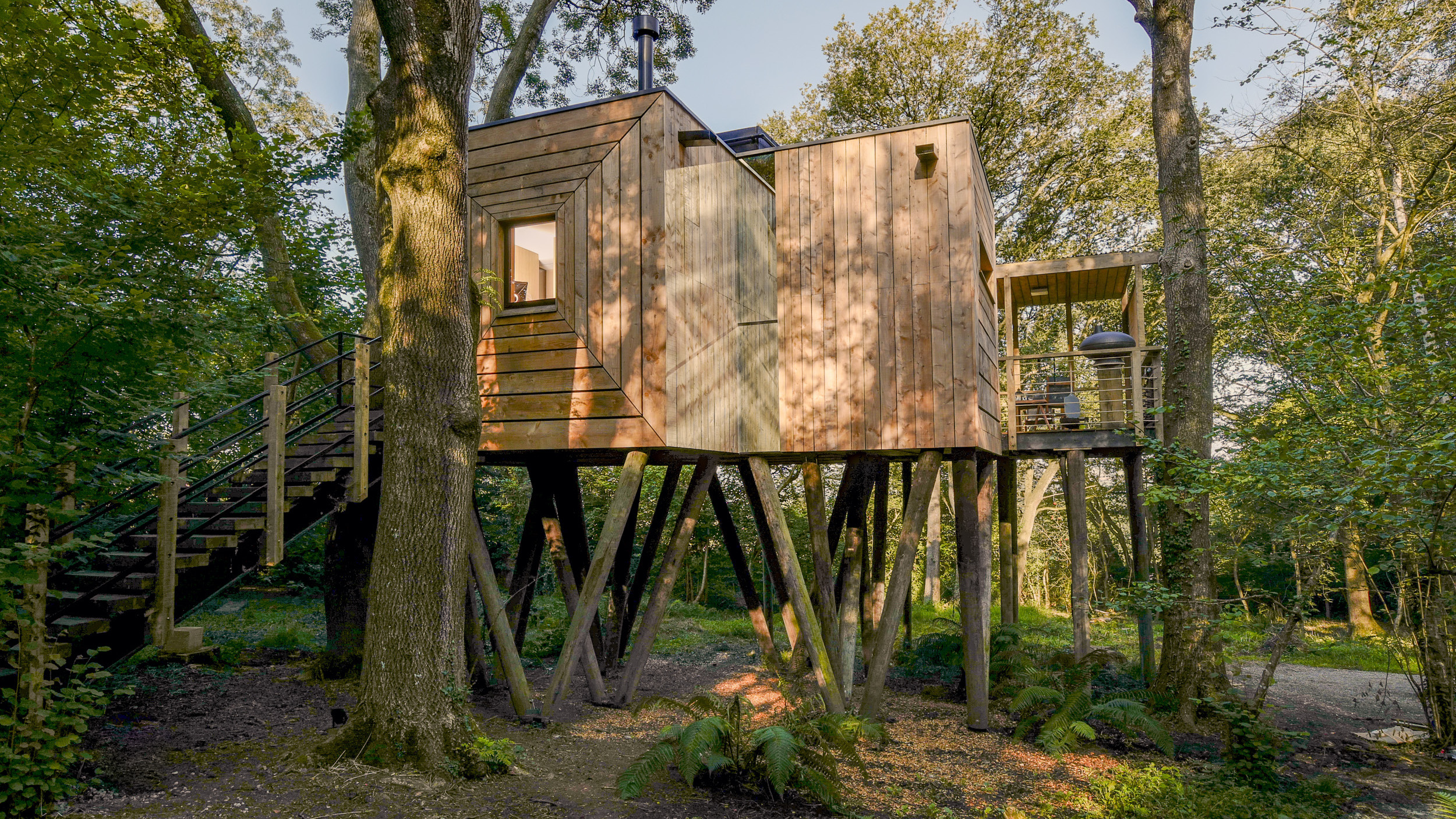 Find solace in the forest at this expansive treehouse retreat in Dorset
Find solace in the forest at this expansive treehouse retreat in DorsetFor sale for the first time, a treehouse, Mallinson’s Woodland Retreat, is a tribute to the skill of designer and master craftsman Guy Mallinson
-
 Modernist Scotland explores the country’s impressive legacy of contemporary architecture
Modernist Scotland explores the country’s impressive legacy of contemporary architectureA new book, Modernist Scotland, delves into the art and ambitions of the International Style in post-war Scotland, presenting 150 projects that typify an age of optimism and innovation.
-
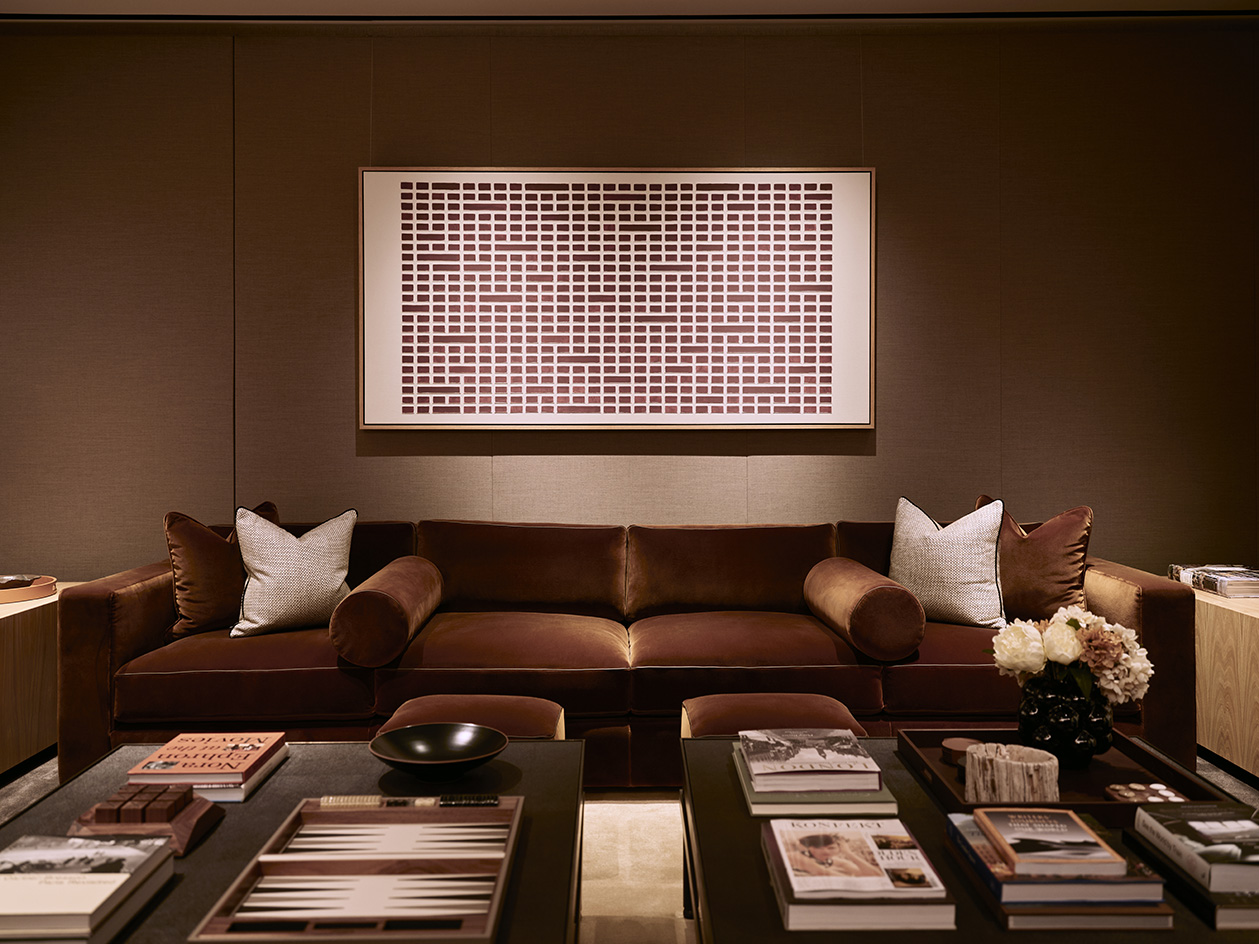 100 George Street is the new kid on the block in fashionable Marylebone
100 George Street is the new kid on the block in fashionable MaryleboneLondon's newest luxury apartment building brings together a sensitive exterior and thoughtful, 21st-century interiors
-
 Take a tour of Retrofit House, the live showcase inspiring sustainable homebuilding
Take a tour of Retrofit House, the live showcase inspiring sustainable homebuildingRetrofit House, a showcase for residential redesign using biomaterials and environmentally smart methods, opens in Birmingham, UK, spearheaded by Civic Square, Dark Matter Labs and Material Cultures; we paid it a visit
-
 How Maggie’s is redefining cancer care through gardens designed for healing, soothing and liberating
How Maggie’s is redefining cancer care through gardens designed for healing, soothing and liberatingCancer support charity Maggie’s has worked with some of garden design’s most celebrated figures; as it turns 30 next year, advancing upon its goal of ‘30 centres by 30’, we look at the integral role Maggie’s gardens play in nurturing and supporting its users